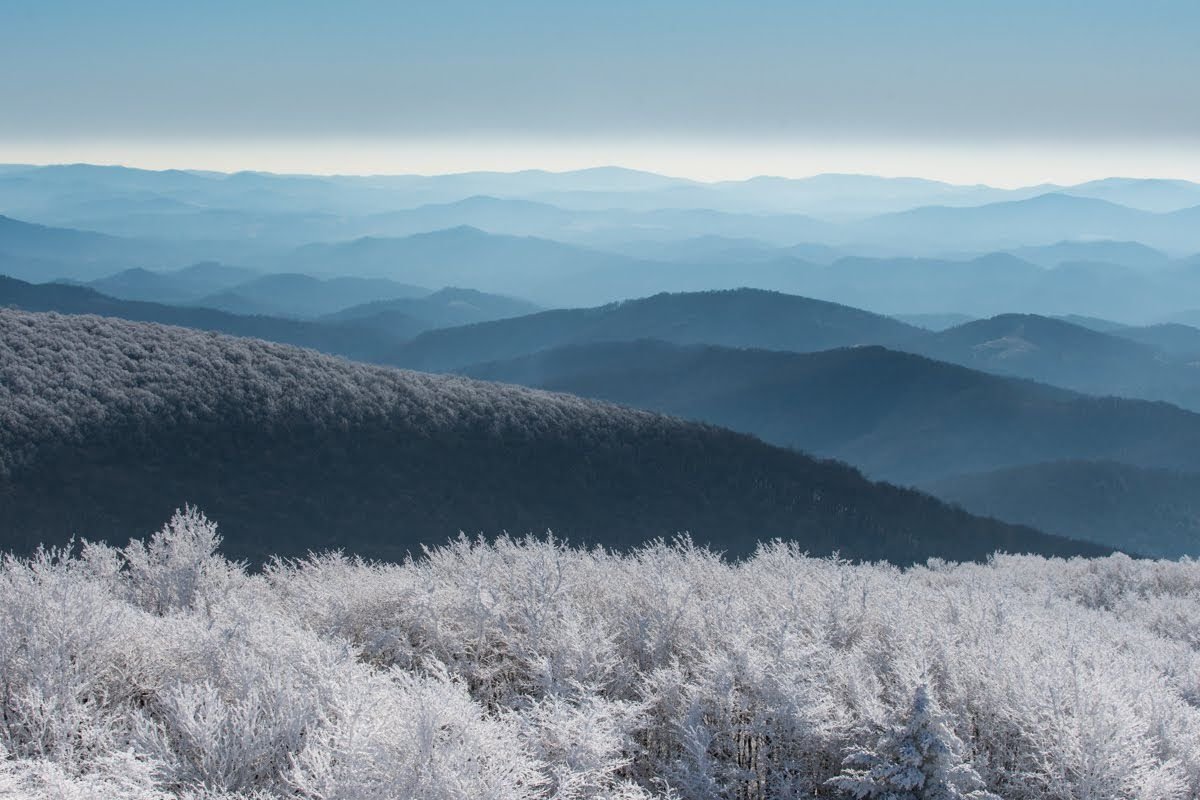Snakes, lizards, and turtles all call the Blue Ridge Mountains home, but these animals are rarely seen in the cold. So, where do reptiles go during winter?
Reptiles are cold-blooded animals, meaning that their body temperature fluctuates with the temperature of their external environment. Birds and mammals, who are warm-blooded, maintain a consistent internal temperature. As it gets colder outside, reptiles’ body temperature drops. This causes their metabolism to slow, along with other bodily functions like heart rate and respiration. To survive a long, cold winter, most reptiles have adapted a hibernation-like behavior known as brumation.
Brumation is a period of low activity exhibited by reptiles, amphibians, and other cold-blooded animals. Animals in brumation are not fully asleep, rather, they are experiencing low levels of bodily activity that results in a state of torpor. Reptiles in brumation are too cold to digest food, so they will not eat during this time. Instead, most reptiles spend fall filling up on food and finding ideal spots to shelter overwinter, when they will try to conserve as much heat and energy as possible. Different reptiles experience brumation in different ways.
Snakes often seek shelter below the frost line in underground burrows (built and abandoned by mice, rabbits, or other burrowing animals). The spots where snakes overwinter are known as hibernacula. During this time, snakes will stay hydrated by absorbing moisture from the soil through their scaly skin. Commonly, many snakes will shelter together in a single hibernacula for safety and warmth. A single hibernacula can have hundreds of snakes and multiple species. On particularly warm winter days, snakes may expend enough energy to crawl to the surface and sun themselves in order to wake up their internal systems.
Box turtles also seek shelter under the frost line. Using their strong forelimbs, they will dig their own tunnels, sometimes underneath leaf litter or fallen logs for an extra layer of insulation. At the end of their tunnels, they will create a cozy den by pushing soil aside with their shell, creating their own little microclimate. Similarly, painted turtles employ burrowing as a brumation strategy. For the aquatic painted turtle, though, burrowing takes place in the muddy bottoms of ponds and lakes. Painted turtles will bury themselves in over a foot of mud, insulated by both the wet soil and the water above. Oxygen is extremely limited in this environment, but because cold temperatures slow respiration rates for cold-blooded organisms, lack of oxygen isn’t as big of a problem for turtles in winter as it would be for humans. Painted turtles have additional adaptations for low oxygen levels too; they will no longer breathe air through their mouths, instead, they absorb oxygen directly through the thin skin of their cloaca.
As temperatures increase, reptiles will emerge from brumation seeking warmth. Turtles, snakes, and lizards can be found basking in sunny areas during spring while temperatures are still chilly, trying to warm up enough to seek food.












